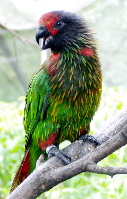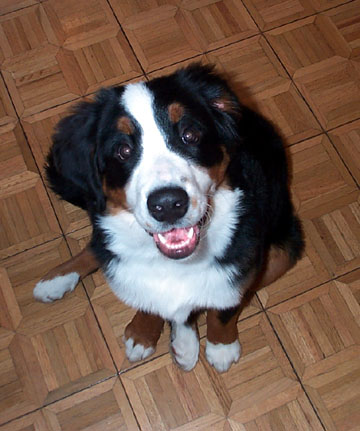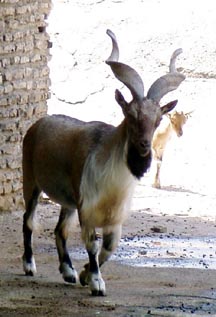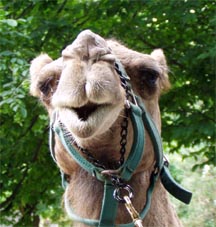

|
Feathers and fur and the hair on your head (that sticks up when you get up out of bed) and horns (but not antlers) and nails on your hand and hooves that go galloping over the land These all may be different but in ways are the same although bears don't get bed head and rarely are tame. The secret is keratin, a protein that's fibrous - another example of polymers inside us. It fills every hair, every feather and fur. Just think! It's because of this cool polymer goats can butt horns and puppies are cuddly and horses can trot through the streets that are muddly. Your hair will be straight or all curly in rings Depending on crosslinks of sulfurs in cysteines. If one side of a hair has more keratin crosslinks, that side will be shorter, and curls (or just kinks). Breaking these crosslinks with heat or a perm allows us to change how we look for a term. The crosslinks re-form in the way that we want For a while, at least, and that's quite a stunt! And when the keratin is really quite thick that's how it makes hooves that go click clack click. Keratin fibrils are even in skin Protecting us, helping to keep all our guts in. But you already knew, before this silly old rhyme that polymers surround us all of the time! |




A cysteine is an amino acid that has sulfur in its side group: -S-H. A protein that has cysteines in it can form crosslinks called disulfide bridges, because each bridge is made up of two sulfur atoms bonded together: -S-S-. (The H atoms go away when a disulfide bridge is formed.) 
 
|
|
Keratin has a really cool fiber-like structure that's perfect for making things like hair. The chains are twisted into a right-handed helix, and two chains are twisted to the left around each other. This helps to hold them together.
|